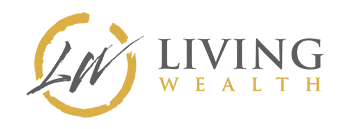How to use policy loans is one of the most common questions we receive. This includes why someone would even want to take a policy loan and pay interest. At first blush, it may seem counter-intuitive when trying to build wealth. So, in today’s episode, we discuss how policy loans work.
Wealth Building with IBC Policy Loans Topics:
- What are policy loans and why would you use them
- What it means to become your own banker
- Who gets the interest that you pay
- When does it make sense to borrow against your policy
- What’s the best way to repay a policy loan
Resources:
- Gain access to our Secret Banking Masterclass now FREE to listeners of the podcast here now
- What is Infinite Banking
- Credit: Episode art background photo by Loreta Pavoliene
Podcast transcript for episode 109: How Policy Loans Build Wealth
Nate: In this episode, we discuss how policy loans really work. Who gets the interest that you pay on a policy loan? When does it make sense to borrow against your policy? And what is the best way to repay a policy loan? She’s Holly, and she helps people find financial freedom.
Holly: He’s Nate. He makes friends out of money. This is Dollars and Nonsense. If you follow the herd, you will be slaughtered.
Nate: All right, welcome back to Dollars and Nonsense everyone. We hope you guys are enjoying these episodes, and we’re excited to dive in again. She’s is helping individuals understand the infinite banking concept, which is how to use whole life insurance policies to become your own banker, and how to treat them like a bank.
Probably the most common questions that we get asked that has to do with policy loans. So, really, we’re just going to have a discussion today. Answer some of the most common questions we get about policy loans and see where we end up. So Holly, policy loans. Where should we jump in at?
Holly: Well, I think the biggest place to jump in at, and we get this almost every day from clients, especially potentially new clients, “Why would I take a policy loan and pay interest?” I get that all the time.
Nate: Definitely. Probably the most commonly asked questions. Certainly, what we would call a stumbling block for those who are just learning about this concept. You’re seeing some videos you’re learning about it. And then you suddenly run into this policy loan like, “Hey, we borrow against the policy and we then have to pay interest back to the policy. Why would that make sense? Why would I have to pay interest to use my own money?”
Let’s go ahead and open the can of worms, I guess, right off the bat. Why does it make sense to borrow money against your policy even when you have to pay interest? I think it takes us back to the fundamental focus of infinite banking. That what we’re trying to do is build a bank that’s outside of the reach of the conventional banks. I believe that a lot of problems in society are occurring in the banking world.
And that people ought to become their own banker, and stop paying to other people. Stop benefiting other people, stop the depositing in places that benefit other people. So inside the policy here, and inside of a policy, we’re paying premiums that produce this cash value. And your cash value is guaranteed every year to increase. It’s guaranteed to grow with compound interest, and earn dividends every single year that you own a policy.
And you really have two options, Holly, to get money out of this to become your own banker. You can take a policy loan against the policy, or you can make a withdrawal against the policy. You can really do either one. So why is it, we suggest people choose the loaner option even if when you take a policy loan, you have to repay it with interest? Why would we still suggest that option as the best way to get the money out of the policy to you use it?
Holly: The simplest answer is, a withdrawal is money that you take out that can’t be put back in. The loan never leaves the cash value of your policy, it is a legitimate loan. So your entire premium that you’ve put in, and I’m going to use the number here. If you’ve put in $10,000, and you take out a $5,000 loan, you still have $10,000 compounding in the policy.
Nate: Yeah, exactly. Right. And I think this is where people get a little bit lost, is that, “Hey, if I have $10,000 of cash value and all that money is earning and growing with guaranteed compounded growth in dividends. And I take a withdrawal of $5,000. Well, that money is obviously not doing anything for me. I took it out. It’s not growing.”
And as you mentioned, Holly, which is another valid point. Is that when you withdraw money from a life insurance policy, it’s not like you can just add it back in. It’s like taking money out of a Roth IRA, or an IRA, or something like that. You have these limits for how much money you’re allowed to put into those programmes. So if you make a big withdrawal from it, it’s not like you can just send it back. Policies have different rules, but it’s similar to that.
It actually goes back to the last episode about max, is that there’s going to be a certain amount of money that’s allowed to be paid in premium each year. So a withdrawal as two problems. First off, I take this money out and it immediately stops working for me, and will never work for me again. [crosstalk 00:04:29]. The growth is gone and I can’t even just put it back, I can’t even do that. So I’m limiting my future financial potential.
A loan is a new transaction, for most people, because you’re not doing IVC. You rarely ever run into this type of thing in the world of finance, where you can actually use your cash value as collateral to receive a policy loan. And what that does is it allows your cash value to still grow and earn money at the full amount. So if you have $10,000 of cash value and you borrowed five grand, you’re still earning interest and dividends on the full $10,000.
Now because you took it as collateral, and you borrowed against it, you do have to pay it back with interest, but they’ve already promised you a growth on the 10 grand. And they’re out working that money into [inaudible 00:05:16] just big lenders. That’s what they do. So it’s out earning interest and they’re taking that interest and using that to cause the growth and the dividends that are paid to you. So the money has to be working someplace.
You just outrank everyone else, who is allowed to borrow the money. So if you borrow the five grand, that means they couldn’t lend it to anybody else. But they need somebody to be paying interest back in, in order to continue paying you the promised interest and dividends, that they’ve already declared that you’re going to receive this year. And so you just happened to be that person, that borrower.
And the interest that you pay in a round-about way, is what they’re using to give you the growth that they’ve already promised. So the loan does two things, as you mentioned, it’s the opposite of the withdrawal. It allows your policy to continue to compound and grow on the full amount, as if nothing changed. You can take a loan out, repay it and be exactly where you were supposed to be anyway.
And then secondly, you’re allowed to repay a policy loan and put money back in anytime you want, without having to change the policy or anything like that. So there’s certainly a lot more perks as to why you would want to choose a policy loan as opposed to a withdrawal.
Holly: And the key here, Nate, is that with the policy loan you’re so keeping your money in motion, you’re not stopping your growth. You’re allowing your money really to grow as fast and as quick as possible, while never stopping that compounding from occurring.
The bottom line is the withdrawal came right out of your policy. The loan didn’t come from your policy. It was just used as a collateral. So why wouldn’t you want to take a loan from something that’s going to continue to grow for you with uninterrupted compounding? You would always want to do that versus a withdrawal.
Nate: Exactly. So, one of the things we could ask, “When does it make sense to do it? Or why does it make sense to take a loan out?” We’ve tried to answer that in technical terms really quick, but some people are saying, “Well [inaudible 00:07:08] vacation, and it’s going to cost a few thousand dollars. “Why would I borrow money from my policy to go on vacation and then pay it back with interest?”
So let’s say you go on a vacation that costs three grand and you pay it back. And with interest, you pay back $3,200. The only way that it would make sense to do what we’re telling you to do is if at the end of you repaying your vacation loan, you end up having more than $3,200. Is that correct?
Holly: Yeah.
Nate: You with me? So if I took out three grand and I paid it back with 3,200, if I don’t have $3,200 or more, then it probably didn’t make sense for me to do that transaction. And what we’re saying with the policy, whenever you borrow the money out, your money continues to compound the entire time that it’s out. For most families, Holly, if they go on vacation annually, you spend some money and then you got to save it back up for next year.
And then you spend it and you got to save it back up for next year. That’s really all we do, but we do with the policy. So we have our cash value, we borrow against it and we pay it back and then we’d do it again next year. And what we’re trying to show people is that, if you can allow your money to stay on the compound curve without ever getting interrupted, you could go on vacation every year with your family for 40 years of your life.
Let’s just say for easy purposes, you spent three grand every single year for 40 years. And then with interest that’s $128,000 [crosstalk 00:08:32] . So essentially if you spend $128,000 on vacations, you’ve spent eight grand in interest and 120,000 on principle to go on these vacations. If I end up having more than $128,000, then I not only got all the money back for the vacation, I also made a profit.
And that’s all we’re trying to say is that, if you can stay on this compound interest curve, if you did this with a policy, you would not have $128,000. You’d have probably more like $190,000, $200,000 [inaudible 00:08:59] of cash rate. Why is that? Well, we paid some, yeah, you paid some interest, but you allowed this huge cash value to grow every single year, without interrupting any of it.
And if you do that over a long enough period of time, if you’ve ever seen a compound interest curve, things start to take off as time goes on. And the problem for most people is that they’re always resetting the curve. They never get to the later years of the curve, which is the best years.
They just go on vacation, they spend the money and they withdraw the money from their savings account. And they start back over, building them back up and they save the money, and they spend it and they start back over. And what you can do with the policies, you can spend three grand going on vacation, but have your policy grow by 10 grand.
And you just made $7,000 by starting a policy to be your vacation fund. So essentially what we’re trying to say is, it doesn’t make sense to pay interest just to be a loser. But if we can show you that through a policy, because of how the system works itself, you can make a lot of money financing things off your life, even if you have to pay interest to the insurance company to borrow.
Holly: When we hear the word interest, we automatically assume Nate, that that interest is going to typically our bank or the credit card company. They’re getting paid the interest, and it doesn’t benefit us at all. Yet with a mutual dividend paying whole life insurance company, you are a shareholder.
And so you have to understand that even that interest is being paid, it does not go directly back into your policy. However, as a shareholder, you reap the benefits of their loans and what they’re doing in order to drive those dividends. So you do reap a benefit by paying your interest.
Nate: We’re so used to being a consumer, not really an owner. And so one thing that’s hard to overcome is this idea that the insurance company is out to get you. Like, they’re your enemy, they’re making money off you. You have to understand that in a mutual company, the owners are the policy holders. There’s nobody else trying to make a profit.
The company that a mutual life insurance company is solely in business to profit it’s owners, really, just like any other business. Any business in the world is an operation to make a profit or produce value for the shareholders. In a mutual company, that just happens to be the policy holders. So every decision that’s made is making decisions that profit the policy holders. That’s the whole reason that the organization is in existence.
So as Holly said, as we’re paying interest, you can’t just assume that they’re trying to smack you around and make a quick perk off you. It’s part of the system. Either you’re going to borrow the money and pay it back with interest, which is going to cause them to be profitable and increase your policy through the interest in dividends they’ve already promised, or they’re going to take that same money and lend it to somebody else, who’s going to pay interest.
Who’s going to produce the profit to give you the dividends and interest they’ve already promised you. So we have to understand that we’re all on the same team here and that we can all benefit from how the system actually works. And you can actually make a of money financing things through policy loan.
Announcer: Are you still stuck in insecurity and uncertainty? Do you want to feel like a financial genius and confident about your future? Holly and Nate [inaudible 00:12:10], something exclusively for Dollars and Nonsense listeners. It’s called the Secret Banking Masterclass. You can gain free access to this course by visiting livingwealth.com/secretbanking. That secretbanking, all one word. The course will share with you how the conventional system stacks the deck against you, and exactly how to break free from their system. We believe in challenging the status quo. We believe in defying conventional wealth tools while maintaining traditional values. After all, most of those conventional tools only ever seem to make someone else on the inner circle, rich. Visit livingwealth.com/secretbanking. That secretbanking, all one word. Ease your worry, and start your journey towards security today. Visit livingwealth.com/secretbanking. Now back to the great episode with Nate and Holly.
Nate: So, I guess, how we can jump into… What’s the best way to repay a policy loan?
Holly: Well, I think the reality is that when we work with you, we design and show you how to pay it back with interest. And we even encourage, crazy as it sounds nice, extra interest payments that goes to pay the [inaudible 00:13:27]. But the reality is if you had a traditional loan from a bank, you would pay it in a systematic way. In the same way. When you do a policy loan, you need to set up a systematic approach to repay that policy loan with the principal in the interest.
Nate: Exactly. So the insurance company themselves, they do not require repayments of anything. You’re paying just once a year, and that’s it. There’s no repayment requirement to repay the policy loan. So whenever you take a policy loan from your policy, the repayments you make are of your own volition, they’re of your own desire, and they’re for your own benefit.
We encourage you to repay the loan to you, because it actually makes sense for you, to put the money back on the shelves to reuse it again. So what you want to do is, we just try to treat ourselves like a bank or traders if we were to borrow money from them, just to keep it disciplined. Because, remember infinite banking, is a concept, it’s not an investment.
It’s a concept, but you have to learn the concept. How can you manage your money? Like a bank and profit, like a bank does. Part of that’s repaying policy loans. So if you’re going to do a car loan, you borrow money, $50,000 to go buy a car. We would suggest repaying the car in a similar way that you would have repaid that car if you borrow money from somebody else. But as.
I said, we like to throw a kink in there and say, “Well, if you’re going to get back all the interest you paid to the insurance company, and you’re going to get back any extra interest that you can put in above and beyond, that will actually produce additional growth in the policy. Maybe you should put in more interest than just the bare minimum to allow your policy to grow even faster than it would have. If you would have just left the money in there, did nothing”
Holly: I’d like to think about it this way, too. That by paying that extra interest, it gives me more just benefit and increases my dividend growth. So it increases my cash. The reality is, I did it with something small, and I say small. I did it with my property taxes to start with. And even over the last nine years as my property taxes have increased, because I’ve paid myself that extra interest, I’ve always had the money to pay the property tax.
And so in some ways that discipline of saying, “If I’m paying something back or the vacation maybe becomes more than 3000, right? Maybe over time, it becomes 4,000…” When you’ve paid that extra interest and you have that cash to use again, to increase that vacation account or whatever it may be, because it’s already been paid back into the policy to be able to use again. Yeah,
Nate: Yeah, absolutely. So the best way to repay a policy loan, it can be determined by what you use it for. There’s also times where it makes sense to only pay interest on the policy loan. So I’ve had plenty of people who’ve gone out and made investments. And if you’re going to make an investment, the interest that you’re paying back to the policy can actually be a tax deduction.
Because if you borrow money to make an investment or you borrow money to utilize in your business, that money, that interests that you pay back on any loan is tax deductible. The same thing applies for a policy loan. And so to maximize tax deductions, I’ve actually recommended plenty of times that people pay interest only back to the policy and get the maximum tax deduction that they can get each and every year.
And the principal payments that they would have typically repaid on the loan, We have them pay that into premium as opposed to loan repayment. So they have room and [inaudible 00:16:53], we would do that. Or we would just start a brand new policy to house the principal payment that they could’ve made back to the loan, but they decided not to, because they wanted to keep the tax deductions high.
But we still want the money to be back in the policies as best we can. And there can be reasons to just do interest only. But for the most part, we suggest doing a loan transaction, and repaying yourself in a similar way that you would have repaid a bank if you’ve got the money from them.
Holly: Sometimes you want to have a strategic loan balance on your policies. And those are when you want to be talking to Nate or myself, or your advisor to really figure out, “When does this make sense? And when do we not want to do that because of how we’ve used the money.” So it all goes back to what that loan was for and how you used that money. In some loans you want to pay back each year, because of how you’re using the money and what it’s going towards.
Nate: Yeah, exactly. One of the key things, and this is a rule of thumb, it’s not a concrete rule. But if you’re going to use the money to do something that’s recurring, or if you’re buying something that depreciates. So if you’re going on vacation, you’re paying your income taxes, you’re doing charitable giving, you’re buying a car, anything that doesn’t appreciate and value.
So if you go take a policy on that and you do something with it that doesn’t appreciate in value, I would suggest repaying that loan, both principal and interest over a timeframe. But most of the time, if you borrowed the money to do something with it, that’s going to appreciate and value. We would suggest just simply repaying the interest only on the policy loan, and allow the loan balance to increase as we borrow more, to do more appreciating things.
We can actually create a strategic loan balance that can house lump sums and windfalls and so forth. So that’s a bit of a more complex strategy. Happy to talk to you about it. As we said, we’re here to advise you on what you should do when you use your money. And we even have a GPS team and a process that can help lay that out.
So the very last thing we’ll get to, and I don’t even know if we want to open this can of worms, is “When does it make sense to borrow against your policy? And maybe we could also clarify that with, “When does it not make sense to borrow from your policy?” Maybe that would be a better thing to ask Holly. So, when does it not make sense to use a policy loan, to pay for something?
Holly: All right, you got me on this one, because I’m of the belief that it always makes sense to use a policy loan. [crosstalk 00:19:16]. Well, I haven’t always used a policy loan, and in saying that is because, sometimes I have honestly borrowed the money from the bank in order to help my policy because it was cheaper to use the bank’s money and to keep my other money for other things.
Nate: That’s a good point.
Holly: So if I have money to buy property, but I’m also going to build on the property and I can get it cheaper from the bank and put it in through my policy and make money that way. Then that’s the way I’m going to do it first. Then just take all the money out of my policy and put it in like a 30 year now.
Nate: Yeah. That’s a good point. So you’re saying, you’ve decided not to borrow against your policy when you felt that you could actually get money alone from some place else. For relatively cheap, maybe even cheaper than the policy loan, which would then allow you to have your cash value still available to take advantage of something else.
Holly: Yes.
Nate: Which I agree with that. Number two, where I’ve had opportunities come my way and I can borrow money from a bank for really cheap, which has freed me up to take my cash value that I otherwise would have had to use. And I can go use that for something else. So that is definitely something that it would make sense to potentially not borrow against the policy. We’ve had some people really want to pay off their house and we have to teach them what we definitely can.
We can even plan that out. We say seven, eight years from now. We would have enough money in your policy at your current trajectory to pay off the house. But you also have to ask yourself the question, is there anything else that you might want to do with that cash value? Because if we borrow it out and pay off the mortgage, that’s going to take a huge amount of your cash value to that, which means we might be limited on other opportunities.
So you have to prioritize a little bit until maybe you have enough cash value to do everything your heart could desire, then everything can be done with a policy. But in the meantime, you have to pick and choose what you use the policy to do and what you use other money to do based on what you have planned. So that’s a good point. When does it not make sense to borrow against the policy?
One thing I was saying is it can not make sense to borrow from the policy. If you’re sitting around, you have a whole bunch of cash, that’s doing nothing. And then you come to me and you say, well, Nate, should I borrow money from my policy? Or should I just use the cash? I have sitting around doing nothing. And this is kind of a double-edged sword because the problem here is not which money should use.
The problem is why are you sitting around. You know how to become your own banker. You have a policy you believe in this process, but there’s some discrepancy here because why would you leave a whole bunch of money sitting in somebody else’s bank, when you know how to build your own bank, that’s going to make you a lot more money. So maybe in that situation, you would just use the cash.
But really my suggestion to you in that situation would be to go ahead and use a policy loan to fund it and take that cash and go start a policy or move it into the pay [inaudible 00:22:08]. Stop letting money sit in somebody else’s bank. The key would be move that money into the system first, and then use it.
So that’s kind of an avenue where you would say, you could use the cash to do this. But in reality, what you should do is move that cash into a policy, and then borrow against the policy. That would be the best of all worlds. Those are probably the main two reasons that you wouldn’t use a policy loan. And those might be the only two. I think the default should be to use policy.
Holly: I get asked this a lot, “I have all this cash sitting there.” They don’t have any room to put the money in the policy to begin with. So you either have to start another one or you have to take a loan out. But the reality is, if you’re sitting on all that cash, you want your money moving. You want it doing something. If you’re not using it wherever it’s sitting, they are using it.
Nate: Yeah. They’re the ones profiting. You’re not, that’s really what we’re trying to teach is, how to get the banks to stop making so much money off you and to start making the money for yourself. And so if you have a whole bunch of cash, you’re kind of violating IBC, not practicing fully. Now that’s not a judgment call or somebody being upset.
That’s just simply saying the question, “Should I use my policy or should I use my cash.” Starts to fall by the wayside, when all of your cash has already been moved into a policy. Then we just use the policy and that’s what we’re supposed to be doing. So I think that’s about all we have time for, Holly. It’s been another great episode.
We could probably keep talking about policy loans and loan interest and questions. We get asked all the time. So if you’re listening to this, you have additional questions, just reach out to Holly or me, and we’ll be happy to answer it. But with that being said, this has been Dollars and Nonsense. If you follow the herd, you will get slaughtered.
Holly: For free transcripts and resources, please visit livingwealth.com/109.
Announcer: Dollars and Nonsense Podcast listeners. One more thing before you go. Ease your worry and start your journey towards security today. Visit livingwealth.com/secretbanking. You gain instant free access to this special one hour. [inaudible 00:24:11] livingwealth.com/secretbanking.









